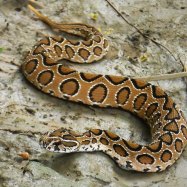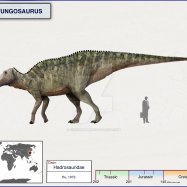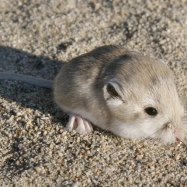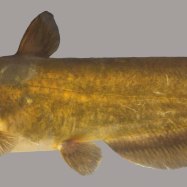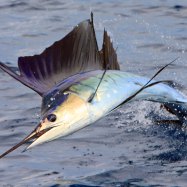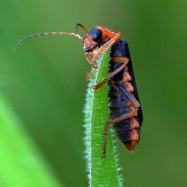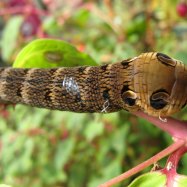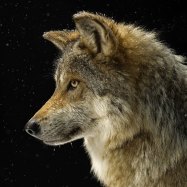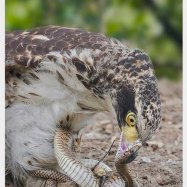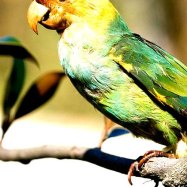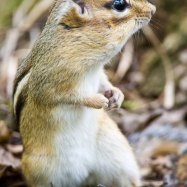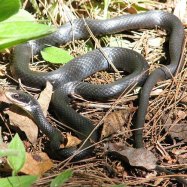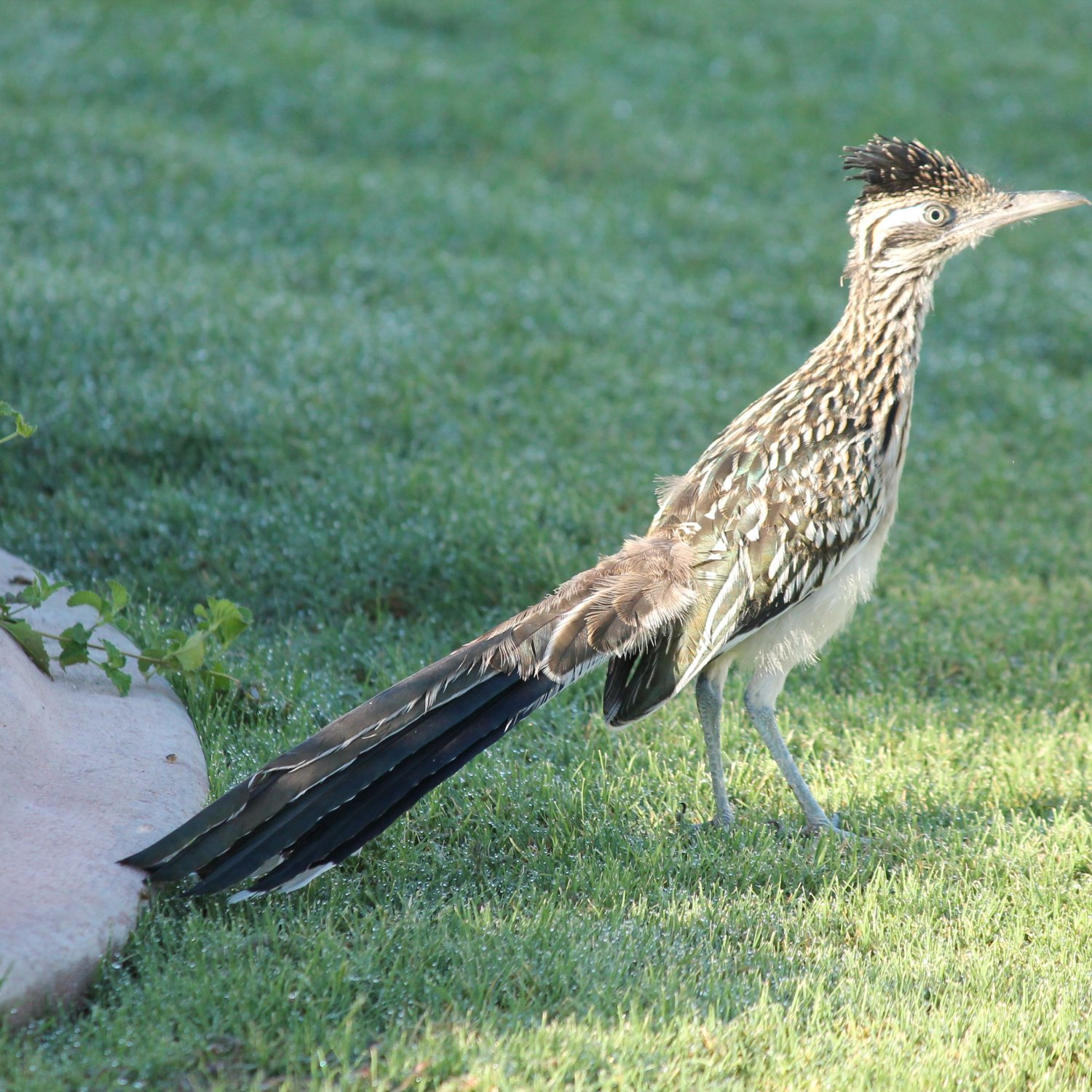
Roadrunner
20-24 inches (51-61 cm)
The Roadrunner is a common sight in Southern California, Arizona, New Mexico, Texas, and Mexico. This member of the Cuculidae family is known for its sleek and agile body, measuring 20-24 inches in length. Keep an eye out for these speedy birds as they dart across roads and open areas hunting for insects and small animals. #Roadrunner #Cuculidae #SouthernCalifornia #Arizona #NewMexico #Texas #Mexico
Animal Details Summary:
Common Name: Roadrunner
Kingdom: Animalia
Habitat: Desert scrubland, chaparral, grasslands
The Fascinating World of the Roadrunner
When most people think of roadrunners, the image of a cartoon bird zipping across the desert may come to mind. While this portrayal may seem exaggerated, the real-life roadrunner is just as intriguing, if not more, than its animated counterpart. From its impressive speed to its unique adaptations, the roadrunner is truly one of nature's most fascinating creatures.Meet the Roadrunner
First and foremost, let's introduce ourselves to our subject Roadrunner. The roadrunner, formally known as Geococcyx californianus, is a member of the Cuculidae family, also known as the cuckoos. This species is commonly found in the Southwestern United States and Mexico, with its primary habitat consisting of desert scrublands, chaparral, and grasslands.The name "roadrunner" comes from the bird's habit of running on roads or trails in front of cars and coyotes, a behavior that has been portrayed in countless cartoons and movies. However, this unique ability is not just for show. The roadrunner's running speed can reach up to 17 miles per hour, making it one of the fastest birds on land. This helps the roadrunner escape from its predators, which include hawks, snakes, and other birds of prey.
The Features and Adaptations of the Roadrunner
In addition to their speed, roadrunners have several other notable features and adaptations that make them stand out in the animal kingdom. One of the most striking characteristics of the roadrunner is its coloration. With a dark brown body, white belly, and black and white streaked tail, the roadrunner is a sight to behold Red Winged Blackbird. These colors serve as camouflage, helping the bird blend into its surroundings and stay hidden from predators.Another unique feature of the roadrunner is its body shape. Unlike most birds, which have a rounded body shape, the roadrunner has a slender and agile body, more similar to that of a snake. This slim shape allows the roadrunner to weave effortlessly through the brush and vegetation of its habitat, making it an expert escape artist.
Feeding is another area where the roadrunner has some impressive adaptations. While most birds feed on plants and insects, roadrunners are carnivorous, meaning they eat other animals. Their diet primarily consists of small reptiles, such as lizards, snakes, and scorpions. However, they have also been known to eat insects, spiders, and even other birds. To hunt and catch their prey, roadrunners have a sharp beak and powerful toes, which are used to pin down their prey.
Conservation Status and Threats
As with many species, the roadrunner's habitat and population are threatened by human activities. The construction of roads and buildings disrupts their natural habitats, and pesticides and other chemicals used in agriculture can harm the roadrunners' food sources. In some areas, illegal collection for the pet trade also poses a threat to roadrunner populations.Despite these challenges, the roadrunner is currently not listed as an endangered species. However, conservation efforts are being made to protect their habitats and educate the public about the importance of preserving these animals and their ecosystems.
The Roadrunner's Cultural Significance
Beyond its role in popular culture, the roadrunner holds a significant place in native cultures, particularly those of the Southwest United States and Mexico. In some Native American legends, the roadrunner is seen as a sly and resourceful messenger, often outsmarting other animals with its cleverness, speed, and agility.Furthermore, in the Mexican state of Sonora, roadrunners are believed to bring good luck and prosperity. Images of the bird can be found in almost every aspect of the culture, from traditional artwork to license plates and logos. Roadrunners are also a popular symbol in sports teams, representing speed, agility, and determination.
The Power of Nature's Adaptations
The fact that the roadrunner has adapted to thrive in the harsh and unforgiving desert environment is truly remarkable. From its running speed to its coloration and diet, every aspect of this bird has evolved to help it survive and thrive in its habitat.In the field of Natural Language Processing, scientists have created algorithms that use the concept of adaptation found in nature. These algorithms are used in speech recognition, language translation, and other language-based processes. By studying and emulating the natural adaptations of creatures like the roadrunner, we are unlocking the secrets of nature and using them to improve technology and our understanding of the world.
Final Thoughts
The roadrunner is a unique and fascinating bird that has captured the imaginations of many. From its physical adaptations to its cultural significance, this bird has a story worth sharing. Admired for its speed and agility, the roadrunner teaches us to embrace and adapt to our surroundings, while also reminding us of the importance of preserving the natural world and all its unique creatures. So, the next time you spot a roadrunner zipping across the desert, take a moment to appreciate this incredible animal and all it represents.

Roadrunner
Animal Details Roadrunner - Scientific Name: Geococcyx californianus
- Category: Animals R
- Scientific Name: Geococcyx californianus
- Common Name: Roadrunner
- Kingdom: Animalia
- Phylum: Chordata
- Class: Aves
- Order: Cuculiformes
- Family: Cuculidae
- Habitat: Desert scrubland, chaparral, grasslands
- Feeding Method: Carnivorous
- Geographical Distribution: Southwestern United States and Mexico
- Country of Origin: United States and Mexico
- Location: Southern California, Arizona, New Mexico, Texas, and Mexico
- Animal Coloration: Dark brown, white, and black
- Body Shape: Slender and agile
- Length: 20-24 inches (51-61 cm)
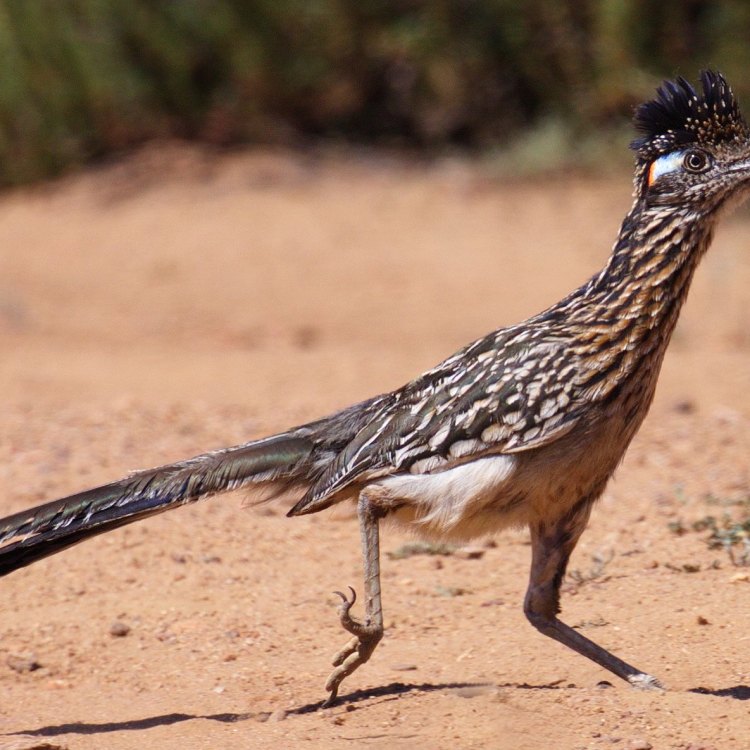
Roadrunner
- Adult Size: Whit a wingspan of 17-24 inches (43-60 cm)
- Average Lifespan: 7-8 years
- Reproduction: Biparental
- Reproductive Behavior: Monogamous
- Sound or Call: Distinct cooing and clattering sound
- Migration Pattern: Non-migratory
- Social Groups: Solitary or in pairs
- Behavior: Fast runner, ability to fly short distances
- Threats: Habitat loss, predation, and road mortality
- Conservation Status: Least Concern
- Impact on Ecosystem: Seed dispersal and controlling pest populations
- Human Use: Ecosystem services and cultural symbolism
- Distinctive Features: Long legs, large head, and long tail
- Interesting Facts: Can run up to 20 miles per hour (32 km/h), eats both plants and animals
- Predator: Coyotes, bobcats, and raptors
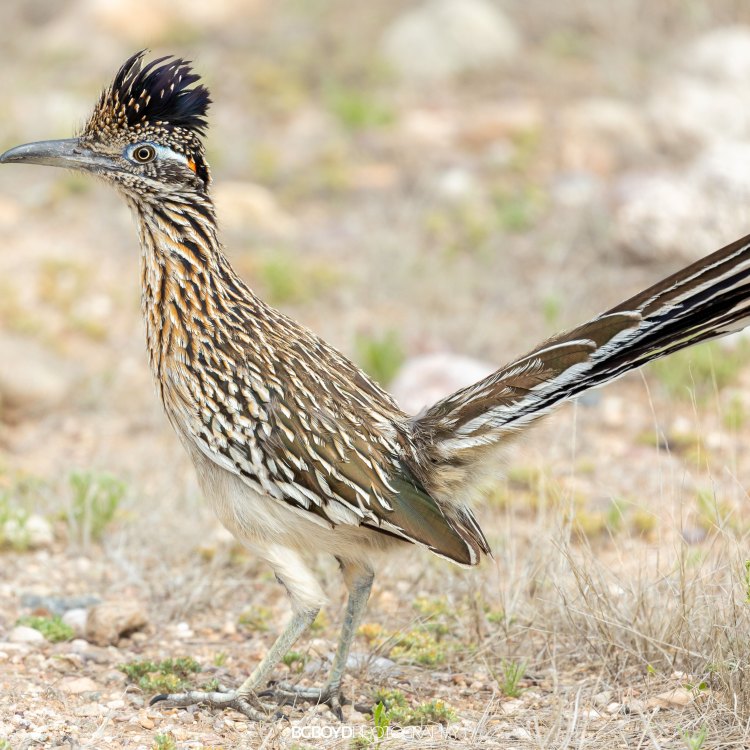
Geococcyx californianus
The Fascinating Roadrunner: A Speedy and Resourceful Bird
The American Southwest is a vast and diverse region known for its arid landscapes and unique flora and fauna. Among the many animals that call this region home, one species stands out for its incredible speed and resourcefulness – the roadrunner. This iconic bird, with its distinctive features and interesting behaviors, has captured the imagination of many and is deeply ingrained in the culture and folklore of the Southwest.Roadrunners (Geococcyx californianus) are members of the cuckoo family and are found throughout the southwestern United States and parts of Mexico PeaceOfAnimals.Com. They are known by various names, including Chaparral Cock, Ground Cuckoo, and Snake Killer, but their most well-known name, "roadrunner," comes from their ability to run at high speeds along roadsides. In this article, we will explore the unique features and behaviors of roadrunners and their vital role in the ecosystem.
A Closer Look at the Roadrunner
Roadrunners are medium-sized birds, with an adult size of 17-24 inches (43-60 cm) and a wingspan of up to 24 inches (60cm). They have long legs, a large head, and a long tail that is typically held at a 45-degree angle. Their coloration is a mottled brown and white, helping them blend into their desert surroundings. They also have distinctive facial markings, with a bare patch of skin behind each eye that is a vibrant blue in males and a pale blue in females.These birds have an average lifespan of 7-8 years in the wild and are biparental, meaning both parents are involved in raising their young. They typically form monogamous pairs and mate for life. Roadrunners are non-migratory, meaning they do not undertake long-distance seasonal movements like many other bird species Russian Bear Dog. Instead, they stay in the same area year-round, defending their territory and seeking out resources.
Behavior and Adaptations of the Roadrunner
Roadrunners are most well-known for their remarkable running abilities. With their long, powerful legs, they can reach speeds of up to 20 miles per hour (32 km/h). They use this speed to their advantage when hunting, as they are able to chase down fast-moving prey, such as lizards, snakes, and insects. However, they are not solely reliant on their running skills, as they also have the ability to fly short distances. They will often use flight to escape predators or to move from one area to another.In addition to their physical adaptations for running, roadrunners also have a few unique behaviors that aid in their survival. One of these is their distinct cooing and clattering sound, which they use to communicate with other roadrunners and to deter potential threats. They are also known for their curiosity and intelligence, often using their sharp beaks to forage in crevices and even turning over objects like rocks to uncover hidden prey.
Threats and Conservation Status
Like many other bird species, habitat loss is a significant threat to roadrunners. As human development and urbanization expand into their territories, roadrunners are losing their natural habitats. This loss of habitat not only restricts their ability to find food and water but also disrupts their nesting and breeding behaviors.Predation is also a major threat to roadrunners, with their eggs and young being vulnerable to a variety of predators, including coyotes, bobcats, and raptors. Road mortality is another significant concern for these birds, as they often scurry across roads in search of food and are at risk of being hit by vehicles.
Despite these threats, the International Union for Conservation of Nature (IUCN) lists roadrunners as a species of "Least Concern." This status indicates that their population is stable, and they are not currently in danger of becoming extinct. However, continued habitat conservation and efforts to reduce road mortality must remain a priority to ensure their long-term survival.
The Impact of Roadrunners on the Ecosystem
Roadrunners play a crucial role in the desert ecosystem, serving as both seed dispersers and pest controllers. As they forage for food, they unknowingly disperse seeds throughout their territories, aiding in plant reproduction and growth. They also eat a variety of insects and small animals, helping to control pest populations and maintain a balance within the ecosystem.In addition to these ecological roles, roadrunners also have cultural significance for human populations living in the Southwest. They are often seen as symbols of strength, courage, and resilience, and have been featured in Native American mythology and artwork. Their distinctive appearance and behaviors make them a popular subject for artists and photographers, further solidifying their place in Southwest culture.
The Human Use of Roadrunners
Roadrunners also provide important ecosystem services that benefit humans. As mentioned earlier, their role in controlling pest populations can help prevent crop damage and reduce the need for harmful pesticides. Additionally, they are a source of inspiration and cultural significance for many people in the Southwest. Tourists also flock to the region to see these iconic birds in their natural habitats, boosting local economies through ecotourism.However, it is essential to note that while roadrunners can provide benefits to humans, it is vital to respect their natural behaviors and habitats. Attempting to capture or domesticate these wild birds is not only unethical but also illegal in many areas.
Interesting Facts about Roadrunners
As we have seen, roadrunners are fascinating birds, but there are many other interesting facts about them that are worth mentioning. Here are just a few:- Roadrunners can go for long periods without drinking water, obtaining most of their hydration from their food.
- They are omnivores, eating both plants and animals, and have a diverse diet that includes insects, small animals, fruits, and seeds.
- Roadrunners have a unique way of cooling themselves down in the hot desert sun. They will spread their wings and lift them away from their body, allowing the breeze to circulate and cool them down.
- Their scientific name, Geococcyx californianus, is a combination of Greek and Latin words meaning "Californian Earth-Cuckoo."
- While it is a common misconception, roadrunners do not actually catch and eat live rattlesnakes. They sometimes feed on snake eggs or small snakes but will avoid larger, venomous species.
The Future of Roadrunners
Roadrunners are fascinating and resilient birds, but they face many challenges in today's world. From habitat loss to threats from predators and vehicles, roadrunners must rely on both natural and human interventions to ensure their survival. As such, it is crucial to continue efforts to protect their habitats, promote safe driving practices, and raise awareness about these unique birds and their importance in the ecosystem.In the end, it is up to humans to ensure that roadrunners, and all other species, have a place in our shared environment. By understanding and appreciating these birds for their distinctive features, behaviors, and valuable contributions, we can work towards a future where the roadrunner remains a symbol of the American Southwest and a key player in the desert ecosystem.
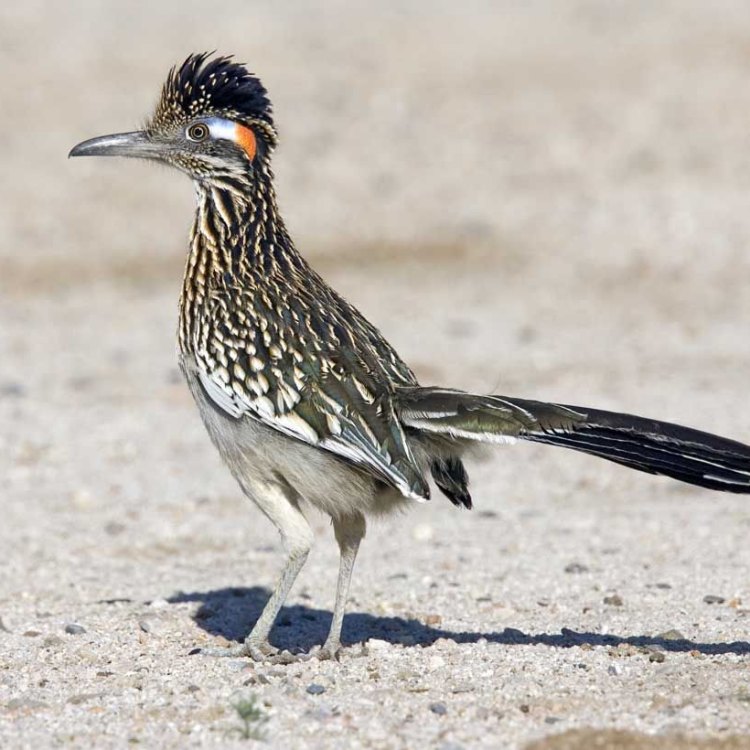
The Fascinating World of the Roadrunner
Disclaimer: The content provided is for informational purposes only. We cannot guarantee the accuracy of the information on this page 100%. All information provided here may change without prior notice.

